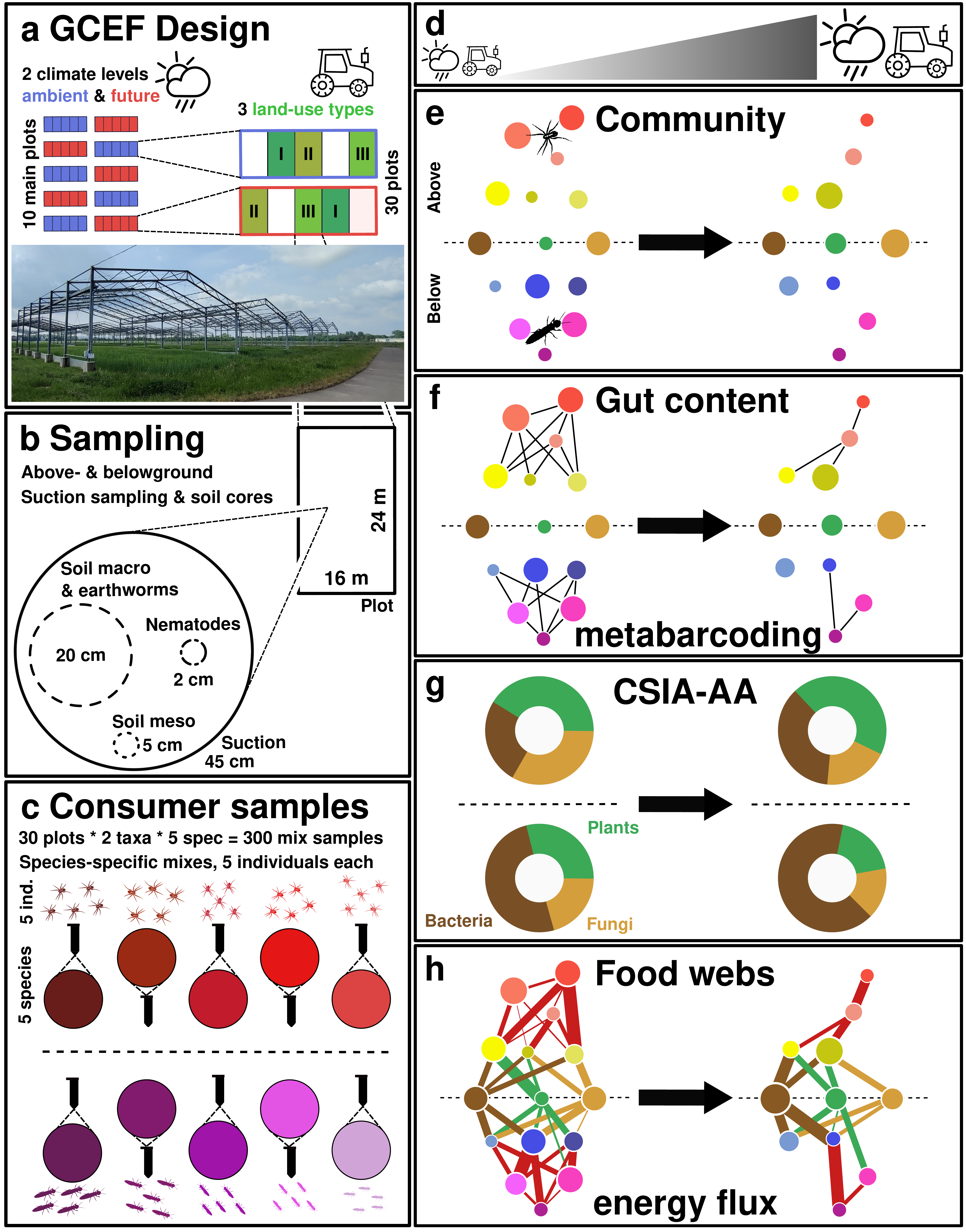
a The Global Change Experimental Facility (GCEF) Bad Lauchstädt, Germany, has 10 main plots, five in each climate level (ambient, blue; future, red). Each main plot is split into five plots (16 x 24 m) with different land-use types. We will use three of these (I-III, green shades), 30 plots overall. b On each plot, we will sample (WP1) vegetation- and ground-dwelling fauna (suction sampling, 45 cm diameter), soil macrofauna (20 cm diameter), mesofauna (5 cm diameter) and nematodes (2 cm diameter), each to 10 cm depth. We will extract earthworms (mustard extraction) in the 20-cm hole, below the 10-cm core. c Spiders and staphylinid beetles (top consumers) will be stored at -20°C, in molecular-grade ethanol. After extraction, sorting and identification, we will create multi-individual samples (WP2) for the five most common spider and staphylinid species (red and purple shades, respectively). These multi-individual samples will be used for gut content metabarcoding (f) and compound specific isotope analysis of amino acids (CSIA-AA, g). We will analyse how climate and land-use intensity (d) alter above- and belowground invertebrate communities (density, biomass, diversity, etc.) (e) and, using the molecular techniques, above- and belowground consumer trophic interactions (resource pool, f) and basal-resource dependency (g). Based on WP1 and WP2, we will build above-belowground food webs to calculate energy flux under different climates and land-use intensity (h, WP3).